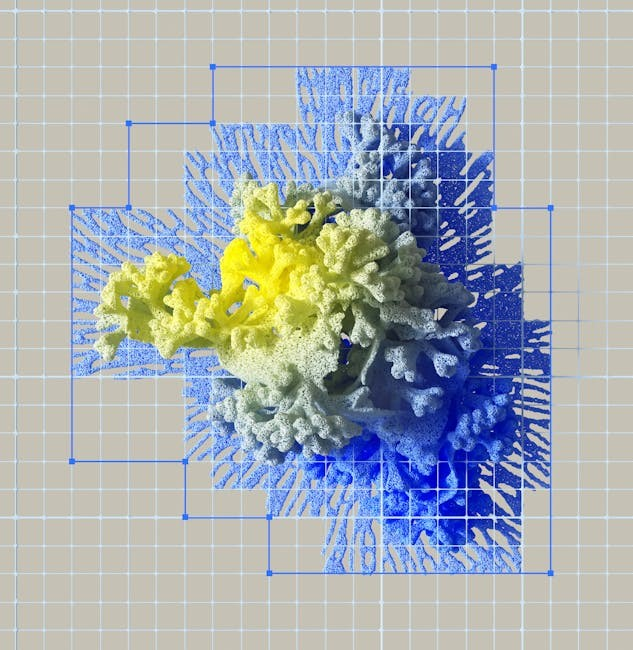Peppered Moth Simulation: Answer Key and Analysis
Understanding the peppered moth simulation necessitates a comprehensive answer key. This resource unveils the mechanisms driving population shifts. It highlights the correlation between environmental pressures and moth survival rates. The interplay of predation‚ camouflage‚ and industrial melanism is thoroughly analyzed‚ providing insights into evolutionary adaptation.
The Peppered Moth Simulation is an engaging educational tool‚ illuminating the principles of natural selection and evolutionary adaptation; This simulation typically involves students modeling the impact of environmental changes on moth populations. The focus is on the peppered moth (Biston betularia)‚ a species whose coloration varies‚ presenting either a light‚ speckled form or a dark‚ melanic form.
The core concept revolves around simulating predation by birds in different environmental conditions. Initially‚ pre-industrial revolution‚ light-colored moths were better camouflaged on lichen-covered trees. As the Industrial Revolution progressed‚ pollution darkened tree bark‚ giving dark-colored moths an advantage. The simulation mirrors this‚ allowing students to observe how moth color influences survival rates under varying environmental pressures.
Answer keys and analysis guides are crucial for students to interpret their simulation results effectively. These resources offer insights into the underlying biological principles‚ helping students understand the connection between environmental changes‚ adaptation‚ and natural selection. The simulation is a valuable resource in exploring ecological and evolutionary concepts.
Objective of the Simulation
The primary objective of the Peppered Moth Simulation is to vividly demonstrate the principles of natural selection in action. By simulating the dynamic interplay between environmental change‚ predation‚ and moth coloration‚ the simulation aims to provide students with a hands-on understanding of evolutionary adaptation.
Specifically‚ the simulation seeks to illustrate how the relative survival rates of light and dark-colored peppered moths are influenced by the color of their surroundings. This is a direct reflection of the historical shift observed during the Industrial Revolution‚ where increased pollution favored darker moths due to improved camouflage. Students learn that organisms with traits better suited to their environment are more likely to survive and reproduce‚ passing on those advantageous traits to future generations.

Furthermore‚ the simulation encourages critical thinking and data analysis skills. Students collect and interpret data on moth populations under different environmental conditions. They then draw conclusions about the selective pressures at play. Ultimately‚ the objective is to foster a deeper comprehension of evolutionary processes and the role of natural selection in shaping biodiversity.
Peppered Moth Biology
The Peppered Moth (Biston betularia) is a common moth species found across Europe‚ Asia‚ and North America. Its life cycle begins as a larva‚ feeding on the leaves of trees such as birch‚ willow‚ and oak. The larvae are vulnerable to predators‚ relying on camouflage to survive.
After the larval stage‚ the peppered moth transforms into a pupa‚ spending the winter in this form. In the spring‚ the adult moth emerges. Adult peppered moths are primarily nocturnal‚ active at night to avoid predation. They possess wings patterned with “peppered” markings‚ providing camouflage against lichen-covered tree bark in their natural habitat.
A key aspect of peppered moth biology is their color variation. The typical form is light-colored with dark speckles. A darker‚ melanic form‚ known as carbonaria‚ also exists. This variation in color is genetically determined and plays a crucial role in their survival. The prevalence of each form within a population is directly influenced by environmental factors‚ particularly the level of industrial pollution and the presence of predators. Understanding this biology is essential for interpreting the simulation results.
Typical Peppered Moth Characteristics
The typical peppered moth‚ or Biston betularia‚ exhibits a suite of characteristics that define its role in its ecosystem. Predominantly‚ these moths are light-colored‚ with a speckled or “peppered” pattern distributed across their wings. This coloration serves as a natural camouflage‚ effectively blending them with the lichen-covered bark of trees‚ their primary habitat. This camouflage is vital for evading predators such as birds‚ which actively hunt these moths.
Beyond their coloration‚ typical peppered moths are nocturnal creatures. They are most active during the night‚ further reducing their risk of predation during daylight hours when birds are most active. The larvae of the peppered moth feed on the leaves of trees like birch‚ willow‚ and oak‚ contributing to their growth and development. To survive the winter months‚ these moths enter a pupal stage‚ effectively pausing their development until warmer conditions return.
These moths are commonly found in Europe‚ Asia‚ and North America. The survival strategies and the environment directly influence the moth population.

Carbonaria Version Characteristics

The carbonaria version of the peppered moth presents a stark contrast to its typical counterpart. Unlike the light‚ speckled appearance of the standard form‚ the carbonaria morph exhibits a predominantly dark‚ almost black coloration. This dramatic difference arises from a genetic mutation that results in increased melanin production‚ a phenomenon known as industrial melanism.
This dark coloration provided a significant survival advantage in environments heavily impacted by industrial pollution. As industrial activities increased‚ tree bark became darkened by soot and the lichens that once grew on them died off. Consequently‚ the typical light-colored moths became more conspicuous against the darkened background‚ making them easier targets for predators. The carbonaria moths‚ however‚ were now better camouflaged‚ allowing them to evade predators more effectively.
The carbonaria morph showcases the power of natural selection. This genetic mutation is what allows it to survive in a polluted environment.

Environmental Factors and Natural Selection
Environmental factors play a crucial role in driving natural selection‚ exemplified by the peppered moth’s evolutionary journey. Natural selection is where species with better characteristics survive if they are better adapted to the environment. Natural selection is the cornerstone of evolution‚ favoring traits that enhance survival and reproduction in specific habitats. The interplay between environmental pressures and genetic variation determines the direction and pace of evolutionary change.
The peppered moth’s story vividly illustrates this principle. The prevalence of the carbonaria morph in polluted environments and the typical moth in clean environments‚ demonstrates the impact of environmental shifts on species’ composition. Natural selection acts as a sieve‚ filtering out less-adapted individuals and promoting the proliferation of those possessing advantageous traits.
This continuous interaction between environment and heredity shapes the genetic makeup of populations‚ leading to adaptations that ensure their persistence in ever-changing ecosystems. Without environmental changes‚ there would be no evolution.
Industrial Revolution Impact
The Industrial Revolution had a profound and lasting impact on the environment. As factories were being built that ran on coal‚ dark smoke covered the area. The Industrial Revolution was a pivotal period in human history‚ marked by unprecedented technological advancements and industrial expansion. However‚ this progress came at a significant environmental cost‚ fundamentally altering ecosystems and influencing the course of natural selection.
One of the most conspicuous consequences of industrialization was the widespread pollution of air and surfaces. The deposition of soot darkened tree bark and killed lichens. The pollution was caused by a mutation in the DNA‚ that was passed on to each generation.
This environmental transformation created a selective pressure favoring darker moths‚ which were better camouflaged against the soot-covered landscape. The rise of the carbonaria morph‚ or melanic form‚ became synonymous with industrial melanism.
This adaptive shift underscores the potent influence of human activities on evolutionary trajectories. It is a reminder of the unintended consequences of industrial progress and the enduring interplay between human actions and the natural world.
Predation and Survival
Predation is a central factor influencing the survival and evolution of the peppered moth. Flycatchers‚ nuthatches‚ and European robins are some of the predators of the peppered moth.
The moths have developed various strategies to evade predators. Adult moths survive predation by flying at night and having good camouflage. The light-colored typical form benefited from camouflage in lichen-covered environments. Darker carbonaria moths had better camouflage on soot-darkened trees.
However‚ their coloration made them conspicuous targets in polluted landscapes‚ increasing their vulnerability to predation. The relationship between moth coloration and survival underscores the principles of natural selection. The moths that are a better fit in the environment survive and reproduce successfully.
Predation acts as a selective force‚ favoring individuals with traits that enhance their ability to avoid detection and capture. This interplay between predation and camouflage drives the evolutionary dynamics of the peppered moth population. It underscores the importance of adaptation for survival in changing environments.
Role of Lichens
Lichens play a crucial role in the peppered moth’s survival. Lichens are fungi. They provide a natural camouflage for the typical light-colored peppered moths. Before the Industrial Revolution‚ lichens thrived on trees‚ creating a light‚ mottled background.
The moths blended seamlessly against this backdrop‚ reducing their risk of predation. As industrial pollution increased‚ lichens became increasingly rare. Soot and other pollutants killed lichens. This resulted in bare‚ darkened tree bark.
The light-colored moths lost their camouflage advantage‚ becoming more vulnerable to predators. In contrast‚ the darker carbonaria moths benefited from the change. They were better camouflaged against the dark trees.
The presence or absence of lichens significantly influenced the moths’ survival. It drove the shift in population. The lichens’ role highlights the interconnectedness of organisms. It demonstrates how environmental changes can alter the selective pressures on a species‚ influencing its evolutionary trajectory.
Simulation Data Analysis
Analyzing data from peppered moth simulations is critical for understanding natural selection. Simulations typically involve tracking the survival rates of light and dark moths in different environments. The data is often presented in tables‚ showing the initial and final population numbers for each moth type.
Analyzing the data reveals patterns related to moth color and survival. In environments with light-colored trees‚ light moths tend to have higher survival rates. Dark moths are more vulnerable. Conversely‚ in dark environments‚ dark moths fare better.
Survival rates vary depending on the environmental conditions. This helps to illustrate the concept of adaptive advantage. The data collected from the simulation allows students to calculate the percentage of each moth type that survives in each environment.
By comparing these percentages‚ students gain a clear understanding of how environmental factors influence natural selection. This data-driven approach reinforces the link between environmental change‚ adaptation‚ and evolution.
Data Table Completion
Completing the data table in a peppered moth simulation is a fundamental step in analyzing the results. The table typically includes columns for the number of light and dark moths at the start of the simulation. It also includes columns for the number of each type remaining after a set period of time.
Accurate data entry is vital for meaningful analysis. Students should carefully record the number of moths “captured” by predators in each round. These values are then used to calculate survival rates. The data table needs to accurately reflect the simulation’s parameters‚ such as forest type (light or dark) and the duration of the simulation.
The survival rates are typically calculated as percentages. This allows for easy comparison of moth survival across different environmental conditions. Ensure that all calculations are double-checked for accuracy. The completed data table serves as the primary source of evidence for drawing conclusions about natural selection. It also supports the role of camouflage in predator avoidance.
Interpreting Results: Moth Color and Survival
Interpreting the results of a peppered moth simulation involves analyzing the relationship between moth color and survival rates. In a light-colored environment‚ light-colored moths typically exhibit higher survival rates. This is because they are better camouflaged against the light background.
Conversely‚ dark-colored moths are more vulnerable to predation in light environments due to their increased visibility. The reverse is true in dark environments‚ where dark-colored moths have a survival advantage. The simulation demonstrates how environmental factors‚ such as industrial pollution‚ can influence natural selection.
A significant difference in survival rates between light and dark moths in a particular environment supports the principle of natural selection. The moths that are better adapted to their surroundings are more likely to survive and reproduce. This leads to a shift in the population’s genetic makeup over time. The data should clearly show the correlation between camouflage‚ predation‚ and the ultimate survival of each moth type.
Evolutionary Implications
The peppered moth simulation vividly illustrates fundamental evolutionary principles‚ showcasing natural selection in action. The shift in moth populations from predominantly light to dark during the Industrial Revolution‚ and the subsequent reversal with pollution control‚ provides compelling evidence of adaptation. This adaptation underscores the capacity of species to evolve in response to environmental changes.
The simulation also demonstrates the role of genetic variation. The existence of both light and dark morphs within the peppered moth population is crucial for adaptation. Without this variation‚ the population would lack the raw material for natural selection to act upon.
Furthermore‚ the peppered moth example highlights the interplay between environment and phenotype. The selective advantage of a particular trait‚ such as moth color‚ is context-dependent. What is advantageous in one environment may be detrimental in another‚ illustrating the dynamic nature of evolution and the crucial concept of survival of the fittest.
